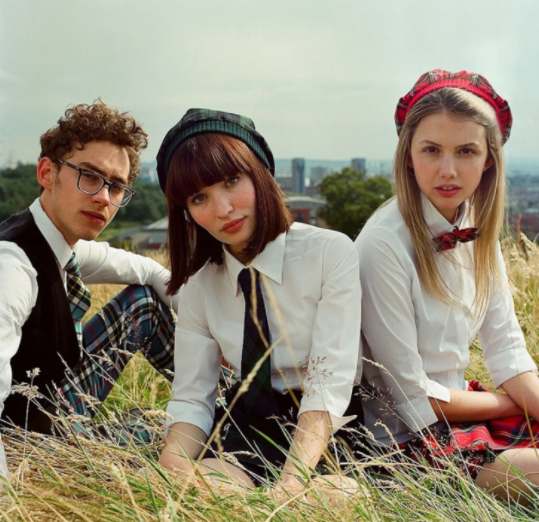Out with the Old, In with the… Older?: A Brief Look into “Twee”

January 13, 2022
If your TikTok is anything like mine, then it’s been characterized by 2022 trend predictions since what feels like Halloween. This is far from an abnormality, of course—what internet pseudo-celeb wouldn’t want to cash in on the attention that a lucky guess made from “analyzing” runway shows and observing the generally cyclical nature of fashion would bring? Everybody’s an expert, and everybody will quietly sweep these predictions under the rug when they inevitably are proven wrong.
Now, the most entertaining aspect of anything that surrounds this will always be the unspoken trends that do pop up, those that no one accurately anticipated, and those that no one really wanted to resurface. Apparently, Tumblr’s (yeah… throwback) “twee fashion” of the early 2010s encapsulates such an occurrence. But what even is twee?
Twee’s hay day essentially mirrors that of Tumblr’s own, as does its fated fall from grace. Back in 2011, this formerly-forgotten cultural phenomenon embodied a dated modernization of mod stylings from the 1960s or 70s—naturally viewed through an egregiously 2010s lens. With colorful tights, hair bows, and ballet flats, twee is rooted in that “quirky-girl desirability” that so often reasserts itself into our fashion zeitgeist. The quasi-vintage mood that the aesthetic aims for, only furthers this, with a hipster saying that everybody’s heard—“I was born in the wrong generation!” It is this that enables twee to simultaneously epitomize Zooey Deschanel, Wes Anderson movies, and a desperate need to be misunderstood.
Twee, in turn, enables all sorts of other things—things far more sinister than blunt-cut bangs or berets. For all its eccentric idealism, twee was not quite so enigmatic, in that it continued to highlight only the skinniest and whitest of voices. Twee circles of the 2000s and 2010s were a cacophony of not only kitschy kindergarten teacher clothing, but also a constant influx of racism, fat-phobia, and eating disorder forums throughout the community.
So these twee girls were big on being different, right? But only in a marketably-peculiar type of different. They all still had to look the same.
It’s been just about a decade since twee’s last decline, the end of an era that left so many teenage girls and young women striving for a body or lifestyle far less healthy than what was portrayed on the tin. But even though the actual clothing has fallen from what’s trendy, its influence never truly died. “Twee never went anywhere, we’re all just in ED recovery,” says TikToker @mrgtfrench. She goes on in her video to very briefly entertain a new wave of the fashion style, one that uplifts all bodies and people rather than belittling them. And of course, if supporters can separate the resurgence from its problematic roots, then the aesthetic will remain harmful only on the eyes, and not on the mind or body. If that’s the case, I’ll be there rooting for these TikTok girls as they embrace that tawdry charm once more.
That’s another thing of note: for all the hubbub, who’s actually wearing these clothes again? Think Pieces galore have filled my “For-You-Page” for the past two weeks about how twee is either the absolute best or worst thing on earth. You’d think everyone would be re-tuning their ukuleles and reapplying their matte red lipstick. But—at least as far as I’m aware— the twee revival so far seems to be only talk.
Maybe that’s just the newness of the old trend’s relevance. Or maybe it truly is a blessing in disguise. Aside from rampant fat-phobia and racism, the fashion cycle, especially now with TikTok’s influence, moves far too fast for the world to keep up with. Micro-trends are out of fashion before they’re ever really in, and it doesn’t take an expert to guess what that does to the environment.
I don’t know. At the end of the day, wear whatever you want. But it is my promise to you that as soon as I start seeing Shein Twee Hauls, I will have comfortably and completely lost my faith in most everything.